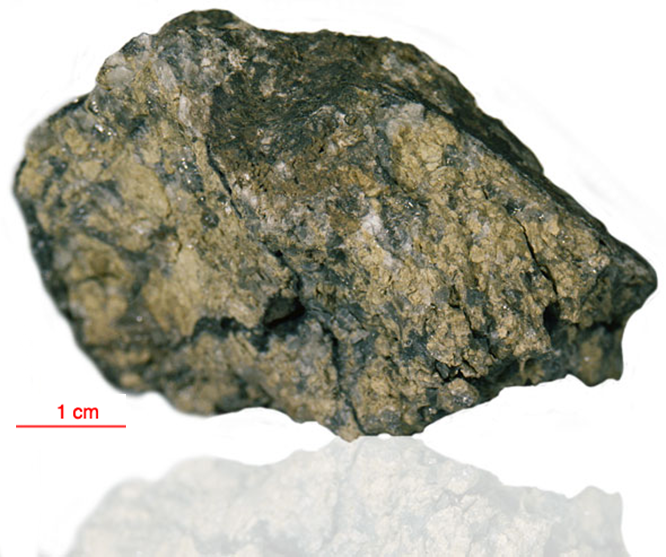
Fact sheet
Sample 78235 was collected from a boulder found on top of the regolith soil at Station Eight. Its age has been determined to be 4.3 billion years, and it thus formed part of the early crust of the Moon. The sample is a light-coloured, coarse-grained plutonic rock, veined and partially coated with a dark-brown glass (an impact/shock melt). Micrometeorite impact pits on the top and bottom of the sample indicate the boulder had rolled around on the lunar surface.
In thin section the rock consists of tabular orthopyroxene crystals and plagioclase feldspar crystals. Both minerals are partially shattered, and maskelynite (formed by cold transformation from crystal to glass by shock) replaces some of the feldspar. As evidence of its long history close to the lunar surface, the sample contains a prominent vein of glassy melt formed during a meteorite impact event.
Further details of this and other Apollo samples are here: http://curator.jsc.nasa.gov/lunar/
Apollo 17, the final manned landing mission, had two objectives: to obtain samples of ancient rocks from the lunar highlands and to look for evidence of younger volcanic activity on the valley floor.
This small Collection contains material deriving from both periods, including igneous rocks around 4.3 billion years old from the lunar highlands as well as younger volcanic samples dating from about 3.6 billion years ago.
Apollo 17 was launched on 7 December 1972.






